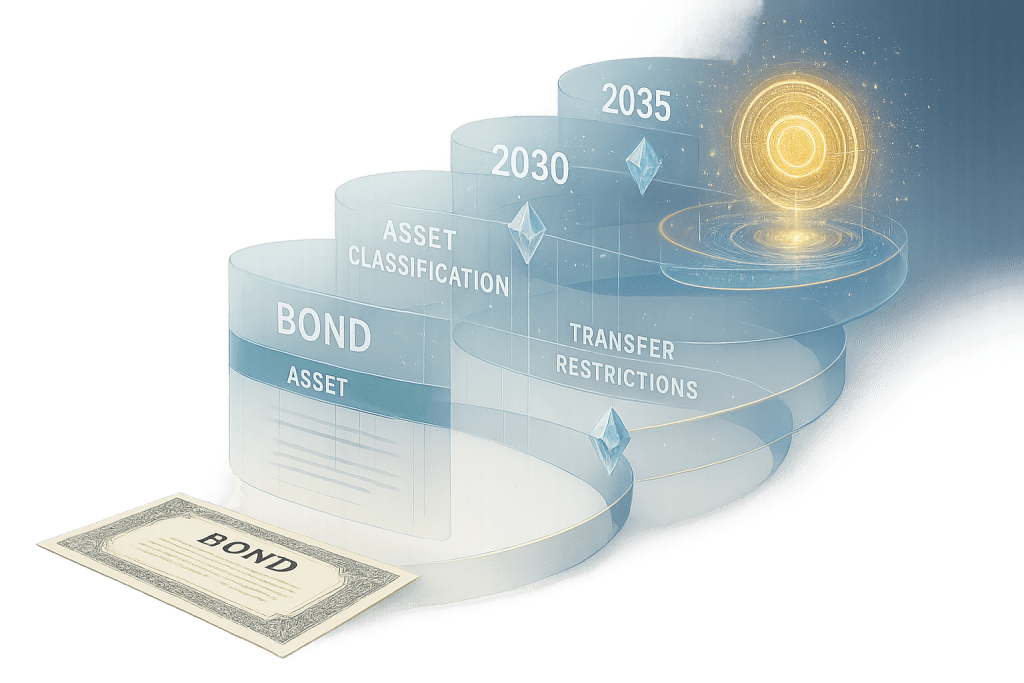TL;DR
Oracle Extractable Value (OEV) represents a structural problem causing hundreds of millions in hidden costs annually across the DeFi ecosystem. Existing mitigation solutions like Chainlink’s SVR, UMA’s Oval, and API3’s auction systems merely “share” or “redistribute” OEV rather than providing fundamental solutions. Oraclizer’s state synchronization approach replaces discrete price updates with continuous state synchronization, eliminating OEV generation at its source. This represents not merely an improvement but a paradigm shift in oracle design, providing fair and transparent oracle services to DeFi protocols through frontrunning opportunity elimination, preemptive lock mechanisms, and node operator information asymmetry resolution.
The Hidden Cost of DeFi’s Oracle Infrastructure
One of the most insidious yet destructive problems in the blockchain ecosystem is Oracle Extractable Value (OEV). While DeFi protocols appear to operate normally with accurate price data on the surface, millions of dollars in value are quietly siphoned away behind the scenes every day.
In January 2024 alone—a month without particularly high volatility—over $4 million in OEV was extracted from the Aave protocol by MEV extractors[1]. This represents merely the tip of the iceberg. Aave and Compound have each generated over $100 million in OEV since their respective launches, yet most of this value never returned to the protocols themselves or their users[2].
The core of the OEV problem lies in the fundamental design philosophy of existing oracles. Current oracles are limited to acting as “messengers” that relay information from the external world to blockchains, inevitably creating temporal arbitrage windows in this process. Sophisticated MEV bots exploit these windows to extract massive profits.
“MEV protection, specifically MEV capture, is at the forefront of Ethereum research. I’m personally very excited to see attempts to capture the hundreds of millions of dollars in MEV leaking from lending protocols.”Robert Leshner, Superstate CEO & Compound Finance Founder
The Anatomy of OEV: Understanding the Root Cause
To fully understand OEV, we must first analyze how price oracles operate. Most oracles function based on deviation thresholds. For example, if Chainlink’s ETH/USD feed has a 1% deviation threshold, when the current price is $2,800 and the actual market price rises to $2,828, the oracle doesn’t update yet.
But what happens when a leveraged position should be liquidated at $2,805? In the legacy oracle model, the sequence unfolds as follows:
- Wait until market price reaches $2,810
- Oracle updates price to $2,810
- MEV bots detect liquidation opportunity and compete
This process creates information asymmetry. MEV bots detect oracle update transactions in the mempool and backrun them to capture liquidation bonuses. More seriously, both protocols and users suffer losses in the gap between when liquidation is actually needed ($2,805) and when the oracle updates ($2,810).
The Mathematics of Value Extraction
The mathematical modeling of OEV can be expressed as follows:
$$OEV_{total} = \sum_{i=1}^{n} (L_i \times B_i – C_i)$$
Where:
- \(L_i\) = Collateral value of the i-th liquidation
- \(B_i\) = Liquidation bonus percentage (typically 5-10%)
- \(C_i\) = Liquidation execution costs (gas fees, etc.)
- \(n\) = Total number of liquidations in a given period
In the current system, over 90% of this value flows to block proposers and MEV extractors, never returning to the protocols that actually created the value[3].
The Limitations of Current Mitigation Strategies
As awareness of the OEV problem has grown, the industry has proposed several mitigation solutions. However, all of these have fundamental limitations.
UMA’s Oval: Redistribution, Not Elimination
Oval, developed by UMA in collaboration with Flashbots, is one of the most prominent OEV mitigation solutions. Oval wraps Chainlink price feeds and auctions OEV through MEV-Share, returning up to 90% of the value to protocols[4].
However, Oval’s approach redistributes rather than eliminates OEV. It still relies on discrete price updates and may introduce additional latency during the auction process. More importantly, it requires trust assumptions regarding Oval nodes and MEV-Share.
Chainlink’s SVR: Incremental Improvement
Smart Value Recapture (SVR), announced by Chainlink in December 2024, is a solution that captures OEV through parallel feed structures. SVR has the advantage of utilizing proven infrastructure by using the same DON architecture as existing Chainlink feeds[5].
However, SVR is fundamentally also an OEV redistribution solution. Latency can occur during the auction process through MEV-Share, and the fallback mechanisms to mitigate this are complex. Most importantly, it doesn’t prevent OEV generation itself.
API3’s OEV Network: Auction-Based Approach
API3 provides a more sophisticated auction mechanism through its ZK-rollup-based OEV Network. It aims to realize data initiatives and low costs by leveraging the advantages of first-party oracles[6].
However, this approach also cannot avoid the inherent latency of auctions and ultimately amounts to “more fairly distributing” OEV. The structural causes of OEV generation remain unchanged.
Oracle State Synchronization: A Paradigm Shift
Understanding the limitations of existing solutions, the Oraclizer research team developed a fundamentally different approach. We recognized that the issue isn’t “how to fairly distribute OEV” but rather “why does OEV occur?”
- ✓ Parallel price feed architecture
- ✓ Battle-tested DON infrastructure
- ✓ Fallback mechanism for reliability
- ⚠ OEV still exists, just captured differently
- ⚠ Complex fallback mechanisms
- ⚠ Dependency on MEV-Share infrastructure
- ✓ First-party oracle advantages
- ✓ ZK-rollup based auction network
- ✓ Lower gas costs for bidding
- ⚠ Auction inherently introduces delays
- ⚠ OEV generation structure unchanged
- ⚠ Limited to first-party oracle data
- ✓ Continuous state synchronization
- ✓ Atomic cross-chain updates
- ✓ Preemptive lock mechanism
- ✓ Zero information asymmetry
- ● Novel architecture under development
- ● Requires protocol-level integration
- ● Advanced cryptographic infrastructure
From Discrete Updates to Continuous Synchronization
While legacy oracles rely on discrete price updates, Oraclizer implements continuous state synchronization. This represents not merely a technical improvement but a fundamental shift in oracle design philosophy.
The Oracle State Machine operates as follows:
- Real-time State Detection: Real-time detection of state changes in off-chain systems
- zk Proof Generation: Cryptographic proof of state change validity
- Atomic State Updates: Atomic execution of state changes and related transactions
In this process, frontrunning or backrunning opportunities are eliminated at the source. There are no temporal gaps that MEV bots can exploit.
The Preemptive Lock Mechanism
Oraclizer’s OSS (Oracle State Synchronizer) implements a preemptive lock mechanism to solve concurrency issues. When oracle requests for the same asset come from multiple chains, OSS processes them as follows:
State Lock Algorithm:
- Acquire preemptive lock based on asset ID
- Verify state changes and generate zk proofs
- Execute cross-chain atomic updates
- Release lock and confirm final state
This mechanism ensures consistent states even in cross-chain environments while preventing OEV generation from competitive liquidations.
Technical Mechanisms for Complete OEV Elimination
Oraclizer can completely eliminate OEV through the combination of four core mechanisms.
Traditional Oracle System
Oraclizer State Synchronization
Four Core OEV Elimination Mechanisms
Mathematical Proof: ΔT = 0
1. Elimination of Information Asymmetry
In legacy oracles, node operators have information advantages. They can decide when to execute price updates and potentially abuse this information.
In Oraclizer, all state changes are verified through zk proofs, and the state synchronization process is deterministic. No specific node or operator can arbitrarily manipulate timing.
2. Atomic Cross-Chain Updates
Existing oracles update independently on each chain, enabling arbitrage through inter-chain time differences.
Oraclizer simultaneously updates states across all relevant chains through cross-chain atomic updates. This can be expressed mathematically as:
$$\forall c \in Chains: Update(c, state_{new}) \Leftrightarrow \forall c’ \in Chains: Update(c’, state_{new})$$
This ensures atomicity where the entire update completes only when updates succeed on all chains.
3. Continuous State Monitoring
Instead of discrete updates, continuous state monitoring immediately executes synchronization when state changes are needed. This has the following time complexity:
- Legacy Oracle: \(O(t_{threshold})\) – wait until deviation threshold is reached
- Oraclizer: \(O(1)\) – process immediately upon state change detection
4. Economic Incentive Realignment
OEV elimination means realigning economic incentive structures. In existing systems:
Value Flow (Legacy):
Protocol → Oracle Update → MEV Bots → Block Builders → Validators
(Value Creation) (Value Extraction)
Value Flow (Oraclizer):
Protocol → Oracle State Machine → Protocol
(Value Creation) (Value Return)
Mathematical Proof of OEV Elimination
Let us mathematically prove Oraclizer’s complete OEV elimination.
Theorem: Complete OEV Elimination
Theorem: Continuous state synchronization through Oracle State Machine completely eliminates Oracle Extractable Value.
Proof:
We define the necessary and sufficient conditions for OEV occurrence as follows:
- \(T_{detect}\): State change detection time
- \(T_{update}\): Oracle update execution time
- \(T_{consume}\): Update consumption (liquidation, etc.) time
In legacy oracles:
$$T_{detect} < T_{update} < T_{consume}$$
OEV occurs in the time interval \(\Delta T = T_{consume} – T_{update}\).
In Oracle State Machine:
$$T_{detect} = T_{update} = T_{consume}$$
Therefore, \(\Delta T = 0\), and the OEV occurrence condition is not satisfied. ∎
Corollary: Cross-Chain Consistency
Corollary: The same OEV elimination effect is maintained in cross-chain environments.
Since \(T_{detect}^{(c_i)} = T_{update}^{(c_i)} = T_{consume}^{(c_i)}\) holds simultaneously for all chains \(c_i\), arbitrage using inter-chain time differences is also impossible.
Impact on the DeFi Ecosystem
Complete elimination of OEV is expected to bring revolutionary changes to the DeFi ecosystem.
1. Capital Efficiency Maximization
Currently, DeFi protocols must set conservative parameters accounting for OEV leakage. Setting high liquidation bonuses and maintaining low LTV ratios is partly due to this reason.
Through OEV elimination, protocols can pursue more aggressive capital efficiency:
- Liquidation bonus optimization (5-10% → 2-3%)
- LTV ratio increases
- Competitive borrowing interest rates
2. True Cross-Chain DeFi
Existing cross-chain DeFi has many constraints due to inter-chain oracle update time differences. Oraclizer’s simultaneous update mechanism enables truly integrated cross-chain DeFi products.
3. Institutional Adoption Acceleration
One reason institutional investors hesitate to participate in DeFi is hidden costs and unpredictable slippage. OEV elimination will provide transparent and predictable trading environments, accelerating institutional capital inflow.
Conclusion: Beyond Mitigation to Elimination
All existing approaches to the OEV problem have focused on “mitigation”. Examples include fairer distribution, more efficient auctions, and more transparent fee structures. However, these approaches haven’t addressed the structural causes of OEV generation.
Oraclizer presents a fundamentally different answer: “elimination”. Through continuous state synchronization, preemptive lock mechanisms, cross-chain atomic updates, and information asymmetry elimination, we eliminate OEV generation at its source.
This represents not merely a technical improvement but a paradigm shift in oracle design philosophy. It’s an evolution from data transmitter to state synchronizer, from passive messenger to active state manager.
For DeFi to become a truly fair and transparent financial system, hidden costs and information asymmetries must be eliminated. Oraclizer’s Oracle State Machine will be the core infrastructure realizing this vision.
References
[1]. Gate Ventures. (2025). Oracle Extractable Value (OEV): The Hidden Revenue and New Frontier in DeFi. https://medium.com/@gate_ventures/oracle-extractable-value-oev-the-hidden-revenue-and-new-frontier-in-defi-in-depth-analysis-3fc796664045
[2]. UMA Project. (2024). What is Oracle Extractable Value (OEV)? https://medium.com/uma-project/what-is-oracle-extractable-value-oev-dbdc9dda724f
[3]. Chorus One. (2024). An introduction to oracle extractable value (OEV). https://chorus.one/articles/an-introduction-to-oracle-extractable-value-oev
[4]. UMA Project. (2024). Announcing Oval: Earn Protocol Revenue by Capturing Oracle MEV. https://medium.com/uma-project/announcing-oval-earn-protocol-revenue-by-capturing-oracle-mev-877192c51fe2
[5]. Chainlink. (2024). Introducing SVR: A Chainlink-Powered MEV Recapture Solution For DeFi. https://blog.chain.link/chainlink-smart-value-recapture-svr/
[6]. API3. (2024). Oracle extractable value (OEV). https://medium.com/api3/oracle-extractable-value-oev-13c1b6d53c5b
[7]. RedStone Finance. (2024). Oracle Extractable Value in DeFi: What Is OEV And How Does It Work? https://blog.redstone.finance/2024/07/05/oracle-extractable-value-in-defi-part-1what-is-oev-and-how-does-it-work/





